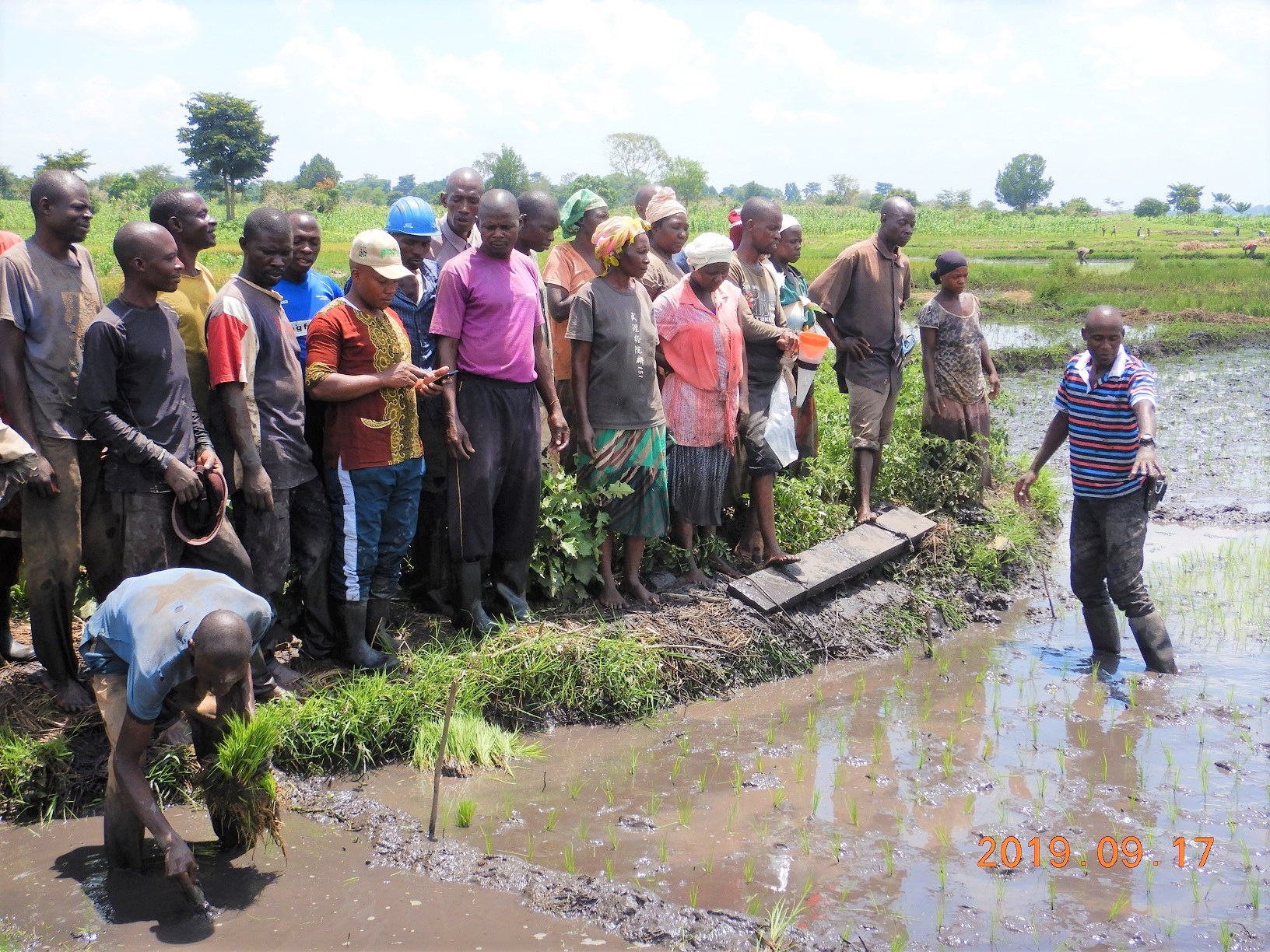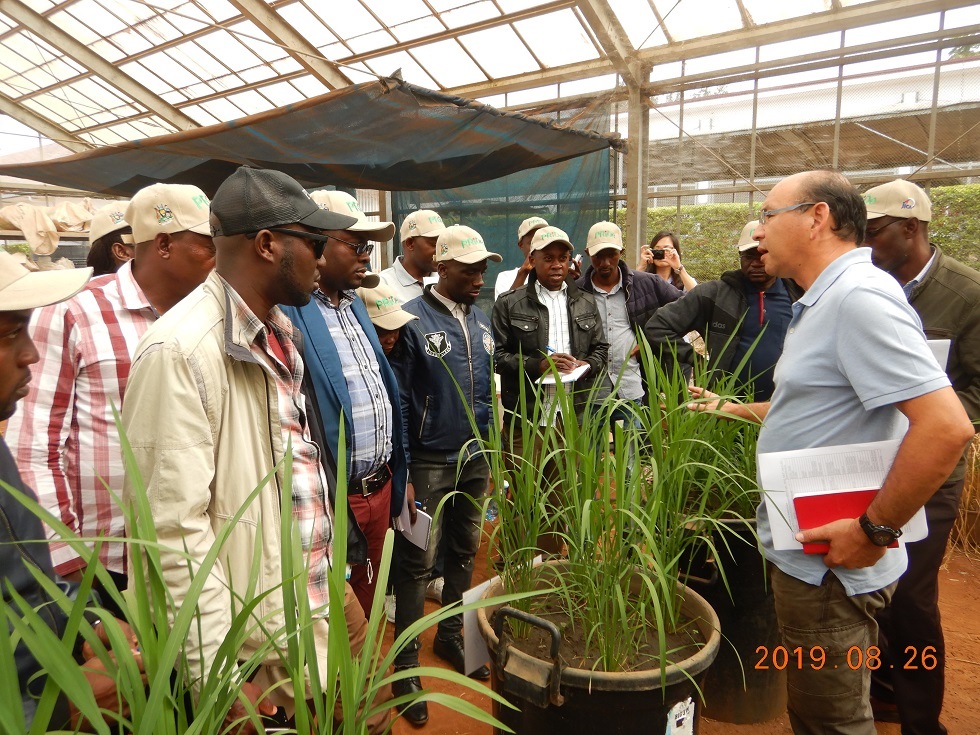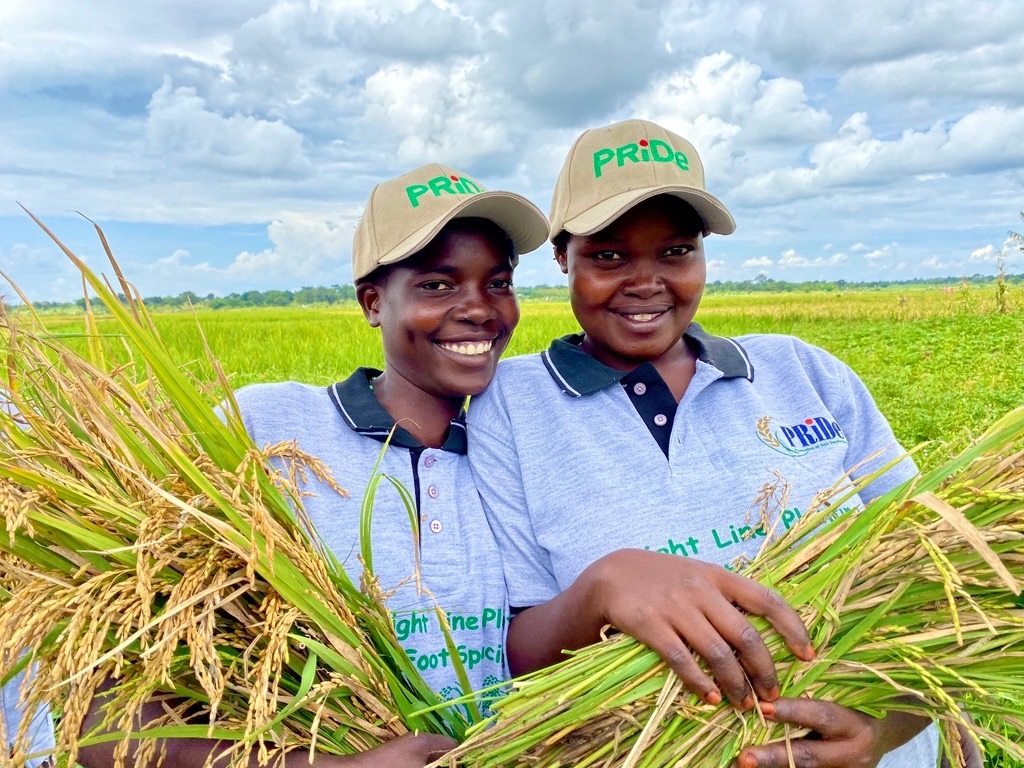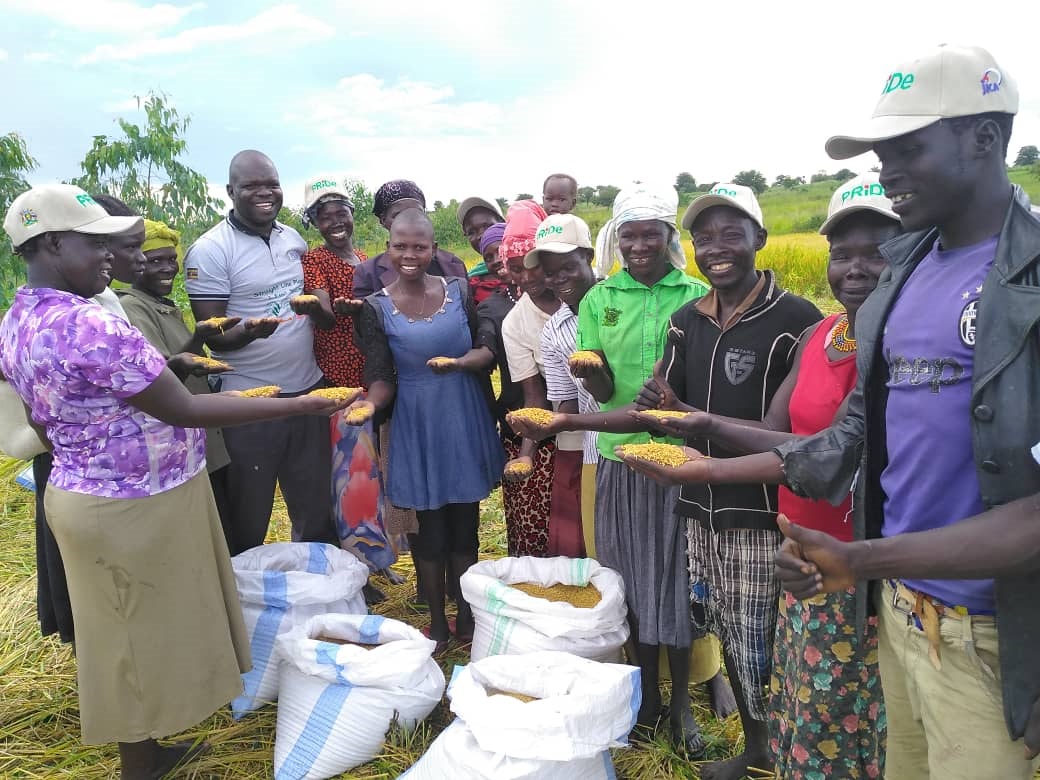The RPLRP project
Introduction
The Regional Pastoral Livelihoods Resilience Project (RPLRP) is a regional project financed by a USD 40 Million loan got by GOU from the World Bank and implemented by three IGAD member states: Uganda, Kenya and Ethiopia.
The RPLRP was prepared within the framework of the IGAD Drought Disaster Resilience and Sustainability Initiative (IDDRSI) and aligned with the Regional Programming Paper (RPP) and Country Programming Paper (CPPs).
In Uganda, the RPLRP is aligned to four strategic objectives of the CAS: promote inclusive and sustainable economic growth; enhance public infrastructure; strengthen human capital development; and improve good governance and value for money.
The RRLRP is also consistent with the Agriculture Sector Development Strategy and Investment Plan (DSIP) 2010/11-2014/15, and specifically, with sub-programs on production and productivity, market access and value addition, enabling environment, and institutional strengthening. DSIP emphasizes pastoral issues and climate change.
The RPLRP will directly contribute to implementing the dairy and meat action plans formulated following the DSIP. Both plans recognize the ASALs as the main sources of cattle and ruminants in Uganda, notably the so-called “cattle corridor” and the north- eastern part of the country (Karamoja region).
This Project is being implemented over a period of five years, by the Government of Uganda (GoU) through the Ministry of Agriculture, Animal Industry, and Fisheries (MAAIF).
The beneficiaries of this project are the pastoral and agro-pastoral communities in the selected countries and in Uganda the project is being implemented in the 12 districts of Abim, Amuria, Amudat, Bukedea, Katakwi, Kotido, Kaabong, Kween, Kumi, Napak, Moroto and Nakapiripirit. It is estimated that the project will directly benefit 42,000 households in Uganda.
MAAIF through RPLRP offers an innovative, comprehensive and flexible response to pastoralist’ vulnerability to drought by delivering key public goods to enhance the livelihoods of the pastoral and agro pastoral communities in Uganda.
The overall Project Development Objective (PDO) is: To enhance livelihood resilience of pastoral and agro-pastoral communities in cross-border drought prone areas of selected countries and improve the capacity of the countries’ governments to respond promptly and effectively to an eligible crisis or emergency.
To achieve the objective, RPLRP investments provide support focusing on four main thematic areas:
- Increasing access to sustainably managed water and land resources for pastoral and agro-pastoral communities.
- Developing and strengthening market infrastructure and market information systems at national and regional levels.
- Increasing pastoral and agro-pastoral livelihood options.
- Reducing risks due to drought and conflicts related to access to natural resources.
Project Description
Summary of RPLRP Project Intermediate Outcomes and Major Outputs
| Intermediate Outcomes | Major Outputs statements, by sub-component (Project Deliverables) |
| Component 1: Natural Resources Management | |
| Infrastructure for improved access to water resources for pastoral and agro-pastoral communities realized and sustainably managed. | Sub-component 1.1: Water Resources Development· Regional/national maps available for water resources uses and users (for investments) refined and disseminated. · Enhance stakeholder capacities to manage the shared water resources in ASALs strengthened. · Infrastructures for water resources access developed /rehabilitated. |
| Pastoral and agro-pastoral land sustainable management increased | Sub-component .1.2: Pasture and Land development · Regional/national maps available for land resources and use related issues refined and disseminated. · Rangeland ecosystems with trans-boundary implications including for livestock movements rehabilitated. |
| Access to natural resources improved and secured | Sub-component 1.3: Securing Access to Natural Resources· Conflict prevention, management and resolution strategies and approaches harmonized. · Policy and legal framework for secured access to natural resources supported. |
| Component 2: Market Access and Trade | |
| Market infrastructure developed and market information system improved at the national and regional levels | Sub-component 2.1: Strengthening market support infrastructure and information systems· Livestock Marketing Infrastructure Improved · Regional livestock marketing information system strengthened |
| Policies, regulatory framework and capacity for traders enhanced | Sub-component 2.2: Improving Livestock Mobility and Trade of Livestock and Livestock Products· Regional trade policies and standards harmonized and simplified · Animal identification and certification systems in the region strengthened and harmonized · Regional animal diseases surveillance and laboratory network strengthened . |
| Component 3: Livelihood support | |
| Livestock health services at the regional, national and local levels enhanced to support greater production and productivity | Sub-Component 3.1: Livestock production and health· Disease and vector surveillance and control services strengthened and harmonized at national and regional levels. · Capacity of the pastoral communities to access sustainable animal health services enhanced, · Breeding strategies and breed improvement programs supported |
| New technologies and practices for food and feed production enhanced through demonstrations | Sub-Component 3.2: Enhanced Food and feed production· Drought tolerant food and feed crop technologies will be promoted and disseminated. |
| Alternative livelihood activities and sub-projects for livelihood diversification realized and sustainably managed | Sub-Component 3.3: Livelihood diversification· Alternative livelihood opportunities are identified and strengthened |
| Component 4: Pastoral Risk Management | |
| Regional, national and local early warning and response mechanisms for disaster risk management improved | Sub-component 4.1: Pastoral risk early warning and response system· Early Warning Systems strengthened and harmonized in the region, and capacities built to operationalized Early Warning systems · Systems and capacities for effective response, including contingency planning are developed/strengthened and harmonized |
| Effective disaster risks management policies operationalized and contingency plans available | Sub-component 4.2: Drought Disaster Risk Management· Ex-ante risk reduction measures for effective DRM are developed and implementation monitored. · DRM policies are harmonized, operationalized, mainstreamed, and institutionalized at central and line ministry levels. · Contingency Funds (regional & national) created and operational. |
| Component 5: Project management and Institutional Support | |
| Sub-component 5.1: Project Management/Monitoring, Evaluation and Learning/Knowledge Management and Communication· Project management and coordination structures established · Integrated Planning, M&E and Learning (PMEL) system established · Integrated knowledge management and communication system established · Project procurement system established · Financial management system established | |
| Sub-component 5.2: Regional and National Institutions Support· 1. National public institutions strengthened | |
3.0 The Project Implementation Progress against the Project Planned Results to be delivered by 2019
| Project Development Objective Indicators | Results by 2019 | Progress by 2017 |
| Death rate of livestock (cattle, camel, goat and sheep) per pastoral household targeted by the project | Reduced death rate0.5% to 0.01% | · Death data collection from a sample of 600 herds (in regard to Households) started in all 12 districts and it has been noted that the death rate has successfully reduced.· Vaccination activities in all 12 districts is going · Surveillance of disease out breaks and Tsetse is going on in all districts · Refresher Training of Animal Health workers (150) on disease management and reporting has been concluded thus strengthening of veterinary services delivery in the districts has been · Tsetse control using emergency application of insecticide pour on and trypanasomosis treatment in Kaabong and Kotido districts has been fully launched. |
| Birth rate of livestock (cattle, camel, goat and sheep) per pastoral household | Improved birth rate2016(54%) to 2019(80%) or more | · Birth data collection from a sample of 600 herds (in regard to Households) started in all 12 districts.· Animal Health Workers have been trained in data collection and guidance of kraal owners to help monitor the results of the interventions. · Strengthening of veterinary service delivery in the districts through vaccine cold chain Van which has eased the transportation and proper handling of vaccines. |
| Volume and real value of animal products sold in selected project markets | Increased volume by 20% | · Established trade routes, at the regional level with the Kenya and Ethiopia borders |
| Number of direct project beneficiaries of which female (percentage) | 42,000 Households in Uganda |
|
| Outcome Indicators for Components | ||
| Number of water infrastructures operational and sustainably managedNumber of pastoral households with improved access to water through project infrastructures rehabilitation and development | – 6 Valley dams– 6 Valley tanks – 104 boreholes | Progress achieved :
|
| Land area (hectares) where sustainable land management practices have been adopted as a result of the project | – 600 hectare | Progress achieved :
|
| Number of community forums/ platforms solving natural resources management conflicts formed and operational. | 125 conflict platforms | 117 platforms have been formed in all the 12 project districts (93.6%) |
| Number of market infrastructures operational and sustainably managed | – Construction of 12 Livestock Markets– Construction of 3 Border Check Points – Construction of 12 Slaughter Facilities – Construction of 4 Holding/Auction Grounds | Progress achieved :
|
| Regional marketing information (price, diseases, markets opportunities) disseminated to partner countries in timely manners | Establish a functional Market information system to regularly provide
| · Procured handsets for the 12 districts to be used for data entry by the District Commercial Officers on a weekly basis.· Training of the district commercial officers in 12 districts was done to equip them with skills in the use of the Livestock Market Information System. · Livestock market information is being harmonized with the partner states of Kenya and Ethiopia through the use of the Regional Livestock Market Information System. · Trade sensitive disease (PPR, CCPP, CBPP and FMD) have been established and cross border disease surveillance and vaccination has been on going. |
| Number of new technologies demonstrated and adopted in the project area | Number new technologies demonstrated and adopted in the project area | · An MOU with NARO has been signed to undertake agricultural research and disseminate appropriate technologies for improving productivity, resilience and profitability of the pastoral and agro pastoral communities in the project area. |
| Number of alternative livelihood activities and sub-projects realized and sustainably managed 2 years after initial investments | Alternative livelihoods started in the communities | · Community sensitization about alternative livelihoods has been carried out 113 communities in 12 project districts· An MOU with NARO was signed to identify drought tolerant crops and forages for promotion. · Mapping of existing groups in project districts (including APFS) for identified technologies was completed. · District teams carried out participatory identification of alternative livelihoods for the communities. |
| Reliable information from Early Warning System (EWS) disseminated timely | Improved Regional, national and local early warning and response mechanism for disaster risk management |
|
| Effective disaster risks management policies harmonized and contingency plans available for the three countries | 12 contingency plans |
|
| Effective coordination, management and implementation of the Project by Ministry of Agriculture, Animal Industry and fisheries through NPCU and Districts |
|
Other projects
- National Oil Palm Project Uganda
- NUFLIP PHASE 1
- The UMFSNP project
- Banana Livelihood Diversification project
- Uganda-China Cooperation
- The ACDP project
- The VODP2
- The ENRP project
- The ATAAS project
- The PISD project
- The RPLRP project
- The MOBIP project
- The Goat Export Project
The Uganda Multi-sectoral Food Security and Nutrition Project (UMFSNP) is implemented, over a period of five years, by the Government of Uganda (GoU) through the Ministry of Agriculture, Animal Industry, and Fisheries (MAAIF) working in a multi-sectoral collaboration with the Ministry of Health (MoH) and the Ministry of Education, Science Technology and Sports (MoESTS)
This project helps to support vulnerable communities in Western Uganda to better adapt to the effects of climate change (CC) through banana value addition activities, to provide greater opportunities for income generation, poverty reduction and food security
The Government of the Republic of Uganda and the Government of the People’s Republic of China have had a cordial relationship for a long time. China has made significant contributions to Uganda’s Agricultural sector development including provision of project aid to Uganda in form of interest-free loans and grants. Notable ones include the Kibimba and Doho rice schemes, Wakawaka Fish landing site, Kajjansi Aquaculture Training Centre, Hydropower Stations and Road Construction. Trade has included leather, coffee, fish and food products among others.
The Ministry of Agriculture, Animal Industry and Fisheries (MAAIF), with support from the World Bank is implementing the Agriculture Cluster Development Project (ACDP). The project arose from the need to implement the Ministry’s comprehensive plan to operationalize the Agriculture Sector Development Strategy and Investment Plan 2011/12 – 2014/15 (now Agriculture Sector Strategic Plan 2015/16 – 2019/20) and in line with the Uganda National Development Plan.
Uganda imports 60-70% of its edible and soap needs; Population growth and rising incomes continue to fuel an annual growth rate of 9% in domestic and regional demand for vegetable oil and its by-products. VODP 2 is Uganda’s strategic effort and increase domestic vegetable oil production, address rural poverty by involving smallholder farmers in oil crops production and improve the health of the population through increased vegetable oil intake.
The project is expected to increase production and productivity, mainly of small holder rice farmers, by focusing on those factors that currently limit production which include;
In 2010, the ATAAS project was developed as an investment in maintaining and raising the level of farmer productivity and household income through the development and adoption of modern farming technologies, techniques and strengthening market linkages. The project had key activities along the research-extension-farmer-market value chain continuum under five components: (1) Developing Agricultural Technologies and Strengthening the National Agricultural Research System (NARS); (2) Enhancing Partnerships between Agricultural Research, Advisory Services and other Stakeholders; (3) Strengthening the National Agricultural Advisory Services (NAADS); (4) Supporting Agribusiness Services and Market Linkages; and (5) Program Management and Coordination.
The Ministry of Agriculture, Animal Industry, and Fisheries (MAAIF) and Japan International Cooperation Agency (JICA) agreed to execute a study for Irrigation Scheme Development referred to as The Project on Irrigation Scheme Development in Central and Eastern Uganda (PISD) through technical cooperation.
The focus was on establishment of medium and large scale irrigation scheme in Uganda targeting farmers cultivating mainly rice in lowland areas with season flooding and unreliable agricultural water source(s). The Study has was entrusted by JICA to the JICA Study Team consists of a consultant from Japan in collaboration with counterpart staffs from MAAIF and MWE. A total of 10 candidate sites districts were studied for irrigation development potential in the districts of Butambala, Buikwe, Kween, Sironko, Bukedea, Bulambuli, Mbale, Butaleja, Budaka and Soroti..
The Regional Pastoral Livelihoods Resilience Project (RPLRP) is a regional project financed by a USD 40 Million loan got by GOU from the World Bank and implemented by three IGAD member states: Uganda, Kenya and Ethiopia.
The RPLRP was prepared within the framework of the IGAD Drought Disaster Resilience and Sustainability Initiative (IDDRSI) and aligned with the Regional Programming Paper (RPP) and Country Programming Paper (CPPs).
Uganda Vision 20140 is a key strategy document for the government of Uganda (GOU) and aims to make Uganda a middle-income country by 2040. The National Development Plan II (NDP2) mentions the development of the livestock sector as one of these strategies, and in particular Uganda’s ability to produce some of the best beef in Africa.
Project Objectives
“To enhance the contribution of the goat industry to farmers’ income and welfare.”
Specific objectives
Avail improved indigenous and exotic (Savannah) goat germplasm to farmers in the project area which will serve as a springboard for establishing a pilot goat export zone in the country
To establish open nucleus breeding herds coupled with systematic cross breeding programme for generating meat goat types for fattening and
Improve the goat management systems and create sustainable supplies of quality goats for internal and export markets.





